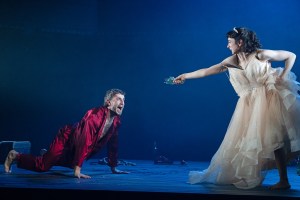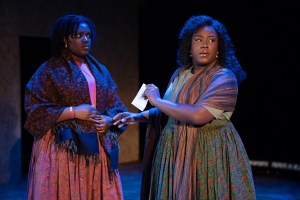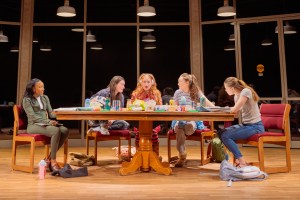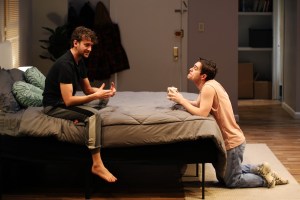
(© Joan Marcus)
One of the world’s great intellectuals — and tough cookies — Susan Sontag might have appeared to observers as having emerged from the womb with an overwhelming sense of superiority and surety. But as we learn almost immediately in Moe Angelos and The Builders Association’s often fascinating biodrama Sontag: Reborn, now at New York Theatre Workshop, the younger Sontag was plagued with an almost crippling amount of self-doubt regarding her talent and sexuality.
But each step of the way Sontag fought with herself, questioning every decision and every action. Even the reading of the journals of French writer Andre Gide by the precocious teenager results in self-admonition. “I finished reading this at 2:30 a.m. of the same day I acquired it — I should have read it much more slowly and I must re-read it many times — I do not think: How marvelously lucid this is!”— but: “Stop! I cannot think this fast! Or rather I cannot grow this fast!”
One of the most engaging aspects of director Marianne Weems’ clever production is that the younger Sontag, hidden behind a scrim as she putters around her desk, also periodically argues with a projection of the older Sontag. (The superb video design is by Austin Switser.) She provides bon mots of wisdom, scathing commentary, and the occasional pop quiz — in keeping with Sontag’s lifelong desire to better prepare herself for the future, even when she is totally unsure of what it would hold.
At times, the intellectual discourse here gets too heady, as if the audience is enrolled in a college class where the curriculum is over their heads. But Angelos wisely never lets us get too far away from Sontag’s human struggles (although the script does give short shrift to the fact that she gave up custody of David for much of his early life so she could travel the world).
As it would turn out, such certainty was more of an illusion than a reality. But few people’s journeys, even with its myriad twists and turns, were more fascinating than Susan Sontag’s.








